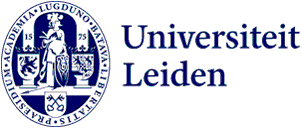1,930 search results for “organisms chemistry” in the Public website
-
Biophysical Organic Chemistry
The long term goal of the Biophysical Organic Chemistry/SSNMR group, headed by Prof. Huub de Groot, is to reach an understanding of structure, dynamics and functional mechanisms of membrane proteins and self-organized biological assemblies and to translate this knowledge into new concepts for nano-devices,…
-
Synthetic, Physical and Computational Chemistry of Propeller-shaped Polycyclic Aromatic Hydrocarbons
This thesis systematically studies the physicochemical properties of non-planar, propeller-shaped, polycyclic aromatic hydrocarbons. The synthesis of several so-called propellerenes is described on a gram scale, using optimized procedures aimed at using less hazardous reagents and reducing the amount…
-
Structure-reactivity relationships in glycosylation chemistry
In a typical glycosylation reaction, a donor is activated to form a (variety of) electrophilic species which can react with a nucleophilic acceptor, following a reaction mechanism having both SN1 and SN2 character.
-
Leiden Institute of Chemistry
The Leiden Institute of Chemistry (LIC) is the basis for research and collaborations of the Leiden chemistry groups. Chemistry is the central science enabling a healthy future in a sustainable society. Chemistry researchers at Leiden University take a fundamental approach in finding tailored solutions…
-
Computational and experimental studies of reactive intermediates in glycosylation reactions
Carbohydrates, or sugars, are the most diverse and most abundant biomolecules known. However, the isolation of carbohydrate samples in sufficient amounts and purity is often impractical or even impossible, so the chemical synthesis of glycosides becomes relevant. The glycosylation reaction, in which…
-
Scrum in secondary chemistry education
This thesis explored the question whether Scrum methodology might function as an appropriate scaffold to enhance students’ learning and to support teachers in context-based secondary chemistry education.
-
 Femke Reidsma
Femke ReidsmaFaculty of Archaeology
-
Research schools in chemistry
The Leiden Institute of Chemistry actively participates in several national research schools for MSc and PhD students. These schools are consortia that stimulate collaboration between research groups of the different participating Dutch universities. The research schools also offer advanced training…
-
Chemistry
Are you thinking about studying Chemistry? Learn more and watch the videos.
-
Bioorthogonal Chemistry: Applications in Activity-Based Protein Profiling
The close interaction between organic chemi stry and biology goes back to the late 18th century, when the modern natural sciences began to take shape. After synthetic organic chemistry arose as a discipline, organic chemists almost immediately began to pursue the synthesis of naturally occurring compounds,…
-
Chemistry
PhD candidates carry out a programme of independent research and additional (limited) course work, culminating in production of a PhD thesis in typically 4 years.
-
Chemistry (MSc)
As a student in the MSc Chemistry programme offered by the Leiden Institute of Chemistry (LIC) you will focus your studies on one of the two main research areas of the LIC. Students in the research area Chemical Biology will study fundamental biological and biomedical problems to understand physiological…
-
Thiosugars: reactivity, methodology and applications
Carbohydrates, alongside proteins and nucleic acids, constitute a crucial and versatile family of biomolecules present in all life forms. They manifest as monosaccharides, oligosaccharides, and polysaccharides, covalently bonded to proteins and fats. Carbohydrates are integral to plant and arthropod…
-
Inhibitors and probes targeting mannanases
This thesis describes the synthesis and biochemical evaluation of a variety of cyclophellitol based activity-based probes and inhibitors targeting various endo- and exo-acting retaining glycosidases. In the last two decades a variety of probes and inhibitors for (hemi)cellulose degrading enzymes have…
-
Bioorthogonal chemistry to unveil antigen processing events
The research described in this thesis focused on the use of bioorthogonal antigens to investigate immunological processes in antigen presenting cells. Bioorthogonal antigens are antigenic proteins produced through recombinant expression in a methionine auxotrophic E. coli strain.
-
Peptide amphiphiles and their use in supramolecular chemistry
Promotor: J.G.E.M.Fraaije, Co-promotor: A. Kros
-
 Elmer Maurits
Elmer MauritsFaculty of Science
-
Medicinal Chemistry
The mission in this division, headed by Laura Heitman, is to design and synthesize novel and better ligands for drug targets. Drug discovery is a lengthy but inspiring adventure. It is often an interplay between academic institutes and pharmaceutical industry, in which scientists at university develop…
-
Theoretical Chemistry
The main goal of the THEOR CHEM group, headed by Prof. Geert-Jan Kroes, is to characterize, and to accurately predict the outcome of chemical reactions at gas-solid and liquid-solid interfaces. Here the solid surface is typically a metal or an ice surface. These goals are important to many areas in…
-
A bioorthogonal chemistry approach to the study of biomolecules in their ultrastructural cellular context
In this thesis the combinatorial use of bioorthogonal labelling and Electron Microscopy (EM)-based imaging techniques is explored to enable observations of specific molecular targets in their ultrastructural context within the cell.
-
Supramolecular & Biomaterials Chemistry
The Supramolecular & Biomaterials Chemistry group comprises the PIs Alexander Kros, Roxanne Kieltyka, Gregory Schneider and Sander Wezenberg, and is active in the field of self-assembly of amphiphilic peptides and applying them in supramolecular chemistry.
-
Catalysis and Surface Chemistry
In the Catalysis and Surface Chemistry group, we investigate how catalysis works on the molecular level. The group is divided in six subgroups, focusing on different aspects of heterogeneous catalysis, homogeneous catalysis and electrocatalysis.
-
Chemistry and Biotechnology for Sustainability
If mankind wants to survive into the 22nd century, we will need to change the way we live drastically. The human impact on our planet is everywhere, we are changing the atmosphere, the oceans and the land, leading to global warming, climate change, loss of biodiversity and pervasive pollution. There…
-
 Willie Peijnenburg
Willie PeijnenburgFaculty of Science
- Teaching Chemistry (MSc)
-
versatility of asymmetric aminoethyl-tetrazines in bioorthogonal chemistry
This thesis describes the synthesis, analysis of various tetrazine bearing compounds and use in bioorthogonal chemistry.
-
Supramolecular and Biomaterials Chemistry
Alexander Kros studies supramolecular systems in a biological environment. The unifying theme between the projects in my lab is specific molecular recognition, i.e. the intermolecular interaction between complementary molecules with high affinity and selectivity. Studying, imitating and dissecting processes…
-
Dark ice chemistry in interstellar clouds
This thesis is largely an experimental study on the formation of solid-state simple and complex organic molecules in the H2O-rich and CO-rich ice phases of dense interstellar clouds and dark cores.
-
Chemistry between stars and planets
In the large gas clouds between the stars, chemical reactions take place under extreme conditions, giving rise to both small molecules, such as water and common salt, as well as large complex molecules that can serve as the building blocks of life. This is known as astrochemistry and it is something…
-
demonstration experiments on the quality of the micro-macro thinking of chemistry students
Demonstration experiments are a potentially powerful instrument to improve the micro-macro thinking of students in secondary education. Therefore we want to design a practical and generative approach to assist teachers to develop lessons with a demonstration experiment.
-
Modulation of plant chemistry by rhizosphere bacteria
Plant-microbe interaction resulted in different physio/chemical responses by host plant and interacting rhizobacteria.
-
Chemistry and characterization of the graphene basal plane and edge for recognition tunneling
Biopolymer sequencing with graphene edge-based tunnel junctions has the potential to overcome current limitations with the third generation of sequencing based on biological nanopores.
-
Astronomer Danna Qasim wins two prizes for dissertation on methane ice
Former Leiden Observatory PhD candidate Danna Qasim has won no less than two prestigious prizes with her thesis, titled 'Dark ice chemistry in interstellar clouds'. Qasim received the IAU PhD Prize from the IAU. The Astrochemistry Subdivision of the American Chemical Society (ACS) honoured her work…
-
Targeting Human Proteasomes: Substrates, Inhibitors and Prodrugs
Large parts of the research described in this Thesis aims at the development of oligopeptide-masked toxins and their in situ immunoproteasome-mediated activation.
-
antigen cross-presentation in dendritic cells: with click-to-release chemistry
The first steps are made in personalised cancer vaccination strategies, which aim to induce a more specific immune response with fewer side effects. The activation of cytotoxic T cells is crucial for an effective immune response.
-
Bio-organic Synthesis
The research in the Biosyn group is focused on the design, synthesis and function of the four major types of biomolecules: nucleic acids, carbohydrates, peptides and lipids and hybrid structures thereof. These biomolecules and their derivatives are used in drug discovery and chemical biology, to develop…
-
Synthesis of D-alanylated wall teichoic acids from staphylococcus aureus
This Thesis describes the synthesis of D-alanylated ribitol-based wall teichoic acids from S. aureus to probe their interaction with immune-binding partners.
-
Poprhyrin-based metal-organic frameworks for the electrochemical oxygen reduction reaction
Hydrogen peroxide (H2O2) is an important bulk chemical that is used in various industrial processes. More than 95% of the H2O2 used in industry is made via the anthraquinone process during which a large amount of energy is going to waste.
-
Synthesis of phosphodiester-containing bacterial cell wall components: teichoic acids, capsular polysaccharides and phosphatidyl glycerol analogues
Promotor: G.A. van der Marel, Co-promotor: J.D.C. Codée
-
Breaking & Entering: PAH photodissociation and top-down chemistry
Laboratory, observation and modeling work on the dissociation of polycyclic aromatic hydrocarbons in interstellar environments and the formation of new molecular species through the fragmentation process.
-
University organ
The organ in the Great Auditorium in the Academy Building has been played at walk-in concerts and University celebrations since 1998.
-
Search and rescue: tackling antibiotic resistance with chemistry
With the rise of multi-drug resistant bacterial pathogens, the possibility of a post-antibiotic world is quickly becoming reality.
-
Dynamic organization of bacterial chromatin by DNA bridging proteins
Bacteria often experience external challenges, such as changes in environmental conditions or attacks by bacteriophages.
-
Analytical chemistry and biochemistry of glycosphingolipids: new developments and insights
Advanced mass spectrometry of glycosphingolipids takes the central stage in this thesis. Investigations focus on characterization of glycosphingolipid metabolism in health and disease with emphasis to the detection and accurate quantitation of known and so far unknown glycosphingolipids and closely…
- Organizing Committee
- Organ specifications
-
Great Auditorium Organ Foundation
Great Auditorium Organ Foundation is a Public Benefit Organisation (Algemeen Nut Beogende Instelling, ANBI)
-
Telders Organizing Office
Contact details
-
Functionalized two-dimensional membranes and materials for solar-to-fuel devices: a multiscale computational approach
In the current global context, there is a pressing need to address sustainable energy supplies to safeguard our Planet and its ecosystems. The choices made by human society have a significant impact on genetic evolution and climate.
-
Photoinduced processes in dye-sensitized photoanodes under the spotlight: a multiscale in silico investigation
With increasing carbon dioxide levels in the atmosphere and their detrimental effect on the global climate, modern society needs to push for more renewable energy sources. Storing widely accessible and abundant solar energy in chemical bonds in the form of molecular fuel via artificial photosynthesis…
